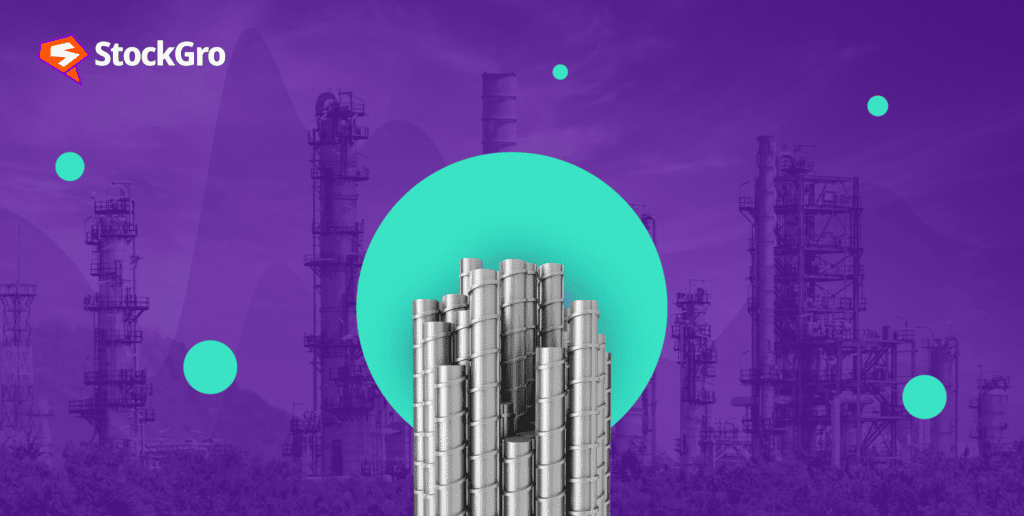
The domestic steel demand for the fiscal year 2022–2023 was estimated by the Indian Steel Association (ISA) to be 119.86 mt. Metals have been a major driving factor behind industrialisation, and steel was the most useful metal.
Steel is both a raw material and a finished product, so its production and consumption are often indicators of a country’s economic growth. That is why it wouldn’t be an overstatement to say that the steel industry remains at the centre of industrial advancement and forms the basis of a given economy.
You may also like: Fueling India’s growth engine: Evolution and outlook of oil & gas industry
What is the iron and steel industry in India?
The iron and steel industry depends on minerals and is known as a mineral-based sector. These industries’ output fuels other sectors. The production of heavy equipment, construction supplies, and railway coaches, among other goods, all starts with iron and steel.
Since the equipment used by the heavy, medium, and light sectors depends on iron and steel, this sector is considered the economy’s foundation.
Many engineering products, building materials, defence, medicinal, telecommunications, scientific, and consumer goods are all created from steel. The amount of steel produced and consumed is often used as an indicator of a nation’s level of development as well.
The iron-steel industry in India flourished in areas with ample resources and raw materials. Regarding the distribution of the iron and steel industry in India, major Indian steel-producing regions are spread out over West Bengal, Jharkhand, Orissa, and Chhattisgarh, and the Chota Nagpur Plateau is one of these locations.
History of the iron and steel industry in India
The iron and steel industry in India dates back over 4,000 years. A renowned iron pillar was found to be built in Delhi, next to Qutub Minar, around 350 AD.
The real development of this sector was initiated by J.N. Tata. The first company in India’s iron and steel industry, known as the Tata Iron and Steel Company, or TISCO, was founded and constructed in 1907 in Jamshedpur.
From only 1.1 million tonnes in 1951 to 29.27 million tonnes in 2000-2001, India has produced a staggering amount of finished steel. Steel production surged at an average rate of more than 8% annually throughout 1950-1960 and 1960-1970.
Before Independence, the public sector companies formed during this time saw the majority of the expansion in the steel industry. Between ‘90 and ‘00, there was a huge environmental shift, with the private sector driving most of the growth.
In 1990-1991 and 2000-2001, the public and private sectors’ respective shares of steel output were 46% and 54%, 32% and 68%, respectively.
In 1991, the Indian iron and steel industry underwent deregulation and decontrol, which resulted in this transformation.
Also read: Why Tata Steel’s decline in net profit is a sign of recovery
Current market growth of the industry
India is among the top manufacturers and users of steel worldwide. India produced 125.3 metric tonnes (MT) of crude steel and 121.2 MT of finished steel in the fiscal year 2023. By 2030, it is projected to have used 230 MT of finished steel, up from 119.1 MT.
The total amount of finished steel imported and exported in FY23 was 6.02 MT and 6.7 MT, respectively. India shipped 11.14 MT of finished steel in FY22. As of April 2023, 8.55 lakh metric tonnes (LMT) of steel were exported, while 4.60 LMT were imported.
By 2030-31, the yearly steel production is projected to cross 300 million tonnes. Net exports of 24 million tonnes are anticipated, by 2030-2031, to surpass consumption of 206 million tonnes. It is projected that, as a consequence, the average individual would use 160 kg of steel.
List of companies in the iron and steel industry in India
Below is a list of the top companies in the iron and steel industry ranked by market capitalisation (as of December 11, 2023)
| Company | Market capitalisation (₹ cr) | Last price (₹) |
| JSW Steel | 206,261.81 | 844.95 |
| Tata Steel | 159,865.39 | 130.05 |
| Hindalco | 117,091.22 | 522.50 |
| Jindal Steel | 73,023.01 | 719.25 |
| NMDC | 54,128.29 | 184.80 |
The global brokerage firm Morgan Stanley recently said 2024 might be another underperforming year for steel stocks. However, the demand for domestic steel will remain high in the next year.
Even though Morgan Stanley thinks that steel stocks will have an unfavourable year in 2024, their price targets for four steelmakers also suggest that these stocks could go down.
Morgan Stanley rates Tata Steel as EQUAL-WEIGHT and sets a price goal of ₹120. This means the price will go down by about 7% from its present market price of ₹130.
Morgan Stanley also gave the Steel Authority of India (SAIL) an EQUAL-WEIGHT grade with a target price of ₹85. However, for JSW Steel and Jindal Steel and Power, the top brokerage firm gave an “underweight” call.
Also read: JSW Infrastructure Ltd. IPO: Is it smooth sailing ahead or a stormy sea?
Future outlook on the iron and steel industry in India
India is working towards becoming a manufacturing giant via governmental programmes like Make in India. As a result, the steel industry has become a significant area of emphasis, given that various industries rely on its production.
India comes second in producing steel in the world at present and is on the verge of surpassing China in terms of consuming finished steel, with the sector contributing around 2% of the country’s GDP.
The industry and the country’s ability to produce goods for export might aid India in regaining an advantageous steel trade balance. With a 2% share of the world steel trade, India has much to contribute to the industry.
India has a lot of room to develop because of its relatively low per capita steel consumption and the anticipated increase in consumption brought about by increasing infrastructure building and the country’s booming automotive and railway industries.
Conclusion
The Ministry of Steel received ₹70.15 crore from the government as part of the Union Budget 2023–24. With its vast potential, India’s iron and steel industry is significant to its economy.
However, excessive reliance on imports, antiquated technology, difficulty with logistics, and environmental concerns limit its expansion and effectiveness. The Ministry of Steel is still actively supporting the steel industry in addressing hurdles to its development.
